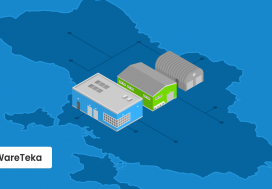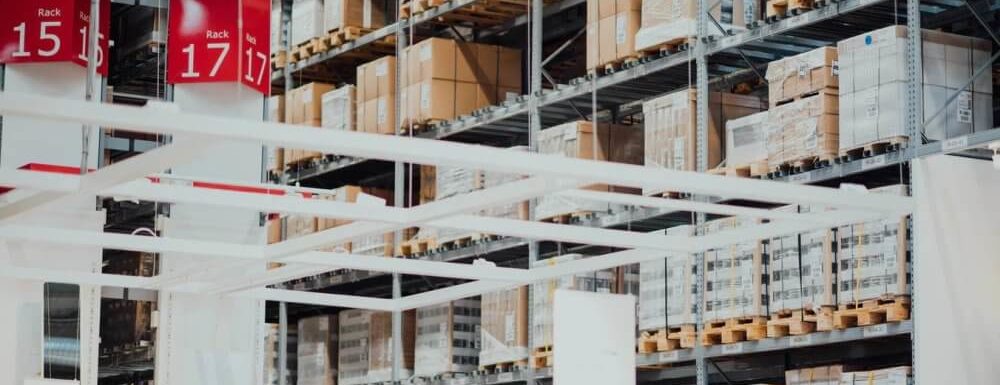
- Classification of warehouses by logistics branches
- Warehouse classification by participants in logistics system
- Warehouse classification by form of property
- Storehouse classification by warehouses functions
- Classification of storage facilities by the types of products
- Warehouse classification by storage conditions
- Classification of storehouses by degree of mechanization
- Classification of storage facilities by technical characteristics
- Storehouse classification by membership in material flows
- Warehouse classification by transport infrastructure
- Classification of storage facilities by classes
- Frequently asked questions about warehouse classifications
- Conclusion
A warehouse is a place where most material flows management processes take place. A lot of companies such as importers, exporters, retail, eCommerce, distributors need warehouses facilities.
When renting or buying warehouses, a company should clearly understand why they’re needed. Logistics premises fulfill a vast majority of functions in supply chain management systems. Here companies consolidate, distribute, store goods for long and short terms, etc.
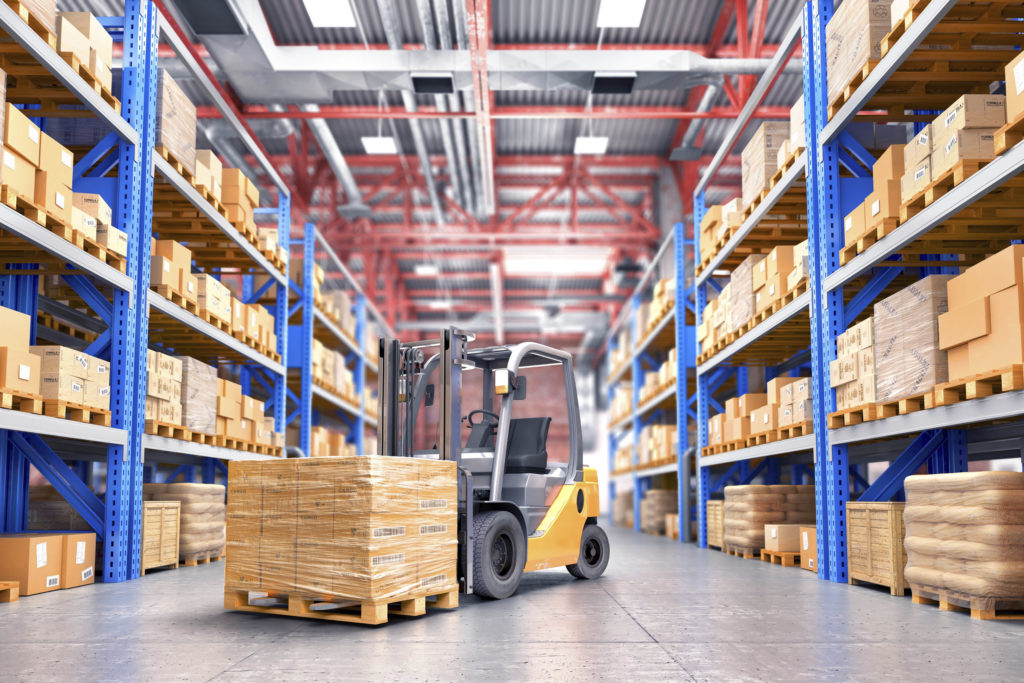
In the article, we’d like to tell about types of warehouses, their classifications by different options. It will help you to identify a suitable logistics property that meets business requirements.
Classification of warehouses by logistics branches
The main goal of logistics is appropriate material flows distribution. However, methods can be different depending on a company’s activity. For example, manufacturers procure raw materials to produce and distribute ready-to-use products.
Classification of warehouses by logistics branches are based on storage facilities functions. It includes 3 types of warehouses:
- Procurement logistics warehouses. Products for manufacturing such as raw materials, components are stored here. These types of warehouses provide companies with materials to produce products.
- Manufacturing logistics warehouses. Products at the intermediate stage of production are stored here. Also, such warehouses supply necessary parts and tools.
- Distribution logistics warehouses. Here comes the production to distribute to end-users.
Thus, the classification by logistics branches clearly represents the material flows from manufacturers to the market.
Warehouse classification by participants in logistics system
There are several parties in the long supply chains. Some of them transport goods from point A to point B, others manage demand.
There are 5 types of storage facilities in the warehouse classification by logistics system participants:
- Manufacturers’ warehouses. These facilities take part in the technological process of creating ready-to-use products from raw materials.
- Trading companies’ warehouses. Here goods for selling are stored. That’s where products begin the way to consumers.
- Carriers’ warehouses. Transportation companies pick up goods from warehouses, and take them to the next point then. There may be several destinations, and freights must be stored somewhere.
- Forwarders’ warehouses. Forwarding companies take over the work not only for freight transportation, but also for work organization. Thus, forwarders consolidate carriers and establish communication between shippers during transportation.
- 3PLs’ warehouses. Logistics providers completely manage supply chains. They transport commodities, handle custom clearance, store goods, deliver them to end-users, etc.
The classification shows who owns a warehouse in supply chains.
Warehouse classification by form of property
There are 4 types of warehouses in the classification:
- Internal. Warehouses a company bought.
- Commercial. It’s about warehouses, where companies order storage services from 3PLs’, for example. In fact, they use third party space.
- Leased. Warehouses a company rents from a landlord.
- State and municipal. Warehouses used for governmental purposes.
Storehouse classification by warehouses functions
There are 5 different types of warehouses in this classification:
- For long-term storage. This is where emergency supplies are kept.
- For goods transshipment. It’s warehouses to store freights until loading and unloading. As a rule, they are located near highways, maritime terminals, or airports.
- For goods distribution. Here commodities from manufacturers are transformed into a trade assortment. Distribution centers workers take products to store, pick orders for retail, manage stocks, etc.
- For seasonal storage. Goods that are sold at the certain times of the year. For example, customers buy umbrellas more often in autumn, when it rains. It’s so called buffer storage facilities. Moreover, agricultural domains use this type of warehouses often.
- For custom clearance. It’s warehouses where goods imported to a country of sale are stored. Commodities are there until custom clearance is completed.
Classification of storage facilities by the types of products
There are differents types of goods are stored in warehouses, so we can divided facilities into such types:
- Warehouses of raw materials
- Warehouses of fabric.
- Warehouses of components.
- Warehouses for work-in-progress.
- Warehouses of ready-to-use goods.
- Warehouses of packing materials.
- Warehouses of disposed products.
- Warehouses of equipment.
It should be noted that different types of products may be stored in warehouses at the same time. In specialized warehouses can be stored only specific goods, and in universal warehouses can be stored several types of products.
Warehouse classification by storage conditions
This classification is based on the opportunity to regulate the temperature in a warehouse. Here are 4 types of storage facilities:
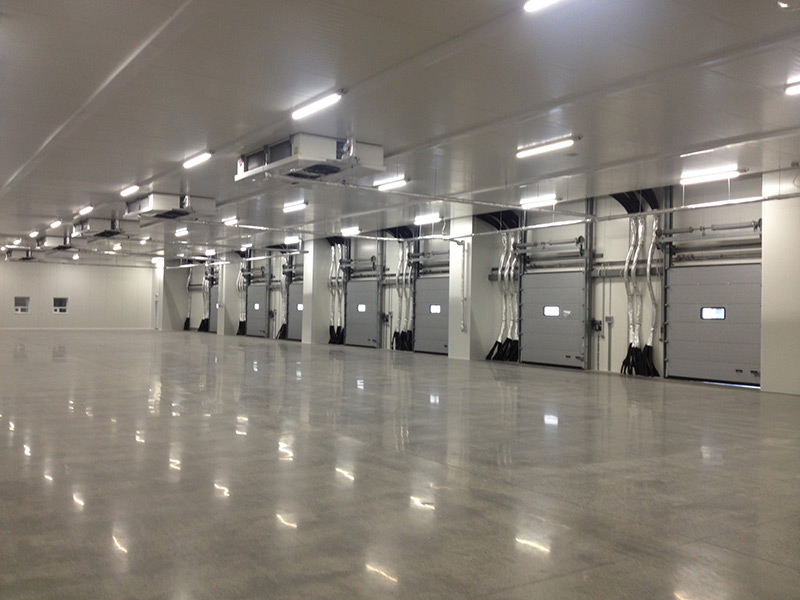
- Unheated. You can’t regulate the inner temperature here. It changes with the seasons.
- Heated. These are warehouses where it is possible to maintain freezing temperatures all year round. For this, special equipment is used.
- Cold. These are warehouses for storing food at subzero temperatures. Cold warehouses can be refrigerated or frozen. The first type allows you to store products chilled, the second to completely freeze them.
- Multi-temperature. These are warehouses with several areas to store goods in different temperature conditions. In addition, in such premises, you can independently adjust the temperature indicators.
Storage conditions are an important aspect in the work of a warehouse. Therefore, before choosing a warehouse, you need to know what products will be stored in it.
Classification of storehouses by degree of mechanization
The main criterion for this classification is the amount of work that can be automated.
There are 4 types of warehouses in the classification by degree of mechanization:
- Non-mechanized. In such warehouses, all the work is done manually. Sometimes a minimum amount of equipment may be used, such as hand trucks.
- Mechanized. These are warehouses where employees perform part of the operations manually, and for part of them special equipment is used. For example, forklifts.
- Automated. These are warehouses where most of the processes are performed by specialized equipment without human intervention. Conveyor belts, stacker cranes are installed here. Warehouse staff do the minimum part of the work. For example, they check documents or pick goods.
- Self-operative. Robots and IT systems carry all operations in these warehouses.
Classification of storage facilities by technical characteristics
According to this classification, warehouses are divided into 3 types:
- Open. These are the premises where products are stored in the yard. There are no roofs here.
- With a canopy. In such warehouses, cargo is protected from the negative impact of weather conditions by special awnings.
- Closed. This is the most common type of warehouse. The premise provides complete product protection with a roof.
Closed warehouses have several subtypes:
- With one floor
- With several floors.
In addition, ceiling heights play an important role in this classification. Low warehouses are premises with a height of up to 6 meters. High warehouses are from 10 meters. Such a warehouse can be equipped with multi-level shelving.
Storehouse classification by membership in material flows
This classification reflects the number of warehouse users:
- Closed. These are premises where goods of only one company are stored.
- Open. There products from several companies are stored.
Warehouse classification by transport infrastructure
In this classification, there are 4 types of warehouses:
- With maritime terminals. These are warehouses for shipping from water transport.
- With a railway line.
- Accessible via a motorway.
- Complex. Includes characteristics of the other three types.
A well-developed infrastructure is an important characteristic of a warehouse, since most of the costs are for transportation.
Classification of storage facilities by classes
Classification of warehouses by classes is the most common. It takes into account all the features of the storage facilities.
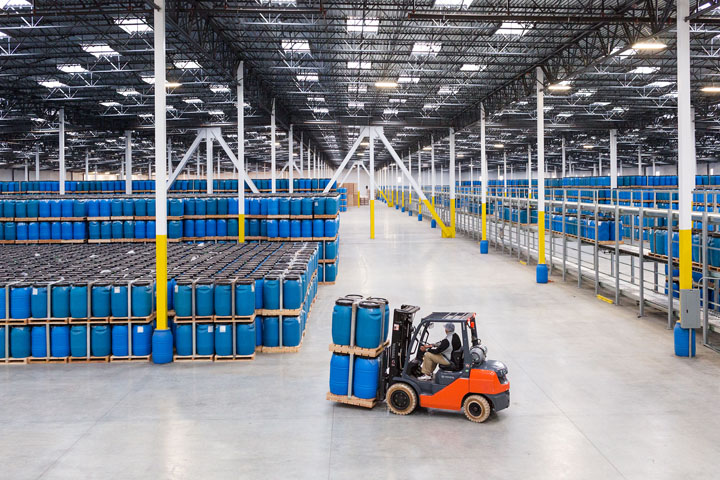
Companies operating in the logistics real estate market develop their own classifications of warehouses. The most common methodology is made by the Knight Frank brokerage agency. According to it, basic types of warehouses are:
- Class A+ is a modernized warehouse. It has 1 floor. To build such a warehouse, special insulating materials are used, usually sandwich panels. They are fireproof and retain heat well. Class A + warehouses have all the necessary communications: special equipment (CCTV monitoring, ventilation, fire extinguishing systems, etc.), the territory is ennobled, 24-hour security is in place. Class A + warehouses have the best characteristics: the ceiling height is not less than 13 meters, the concrete anti-dust floor can withstand a load of 5 tons per square meter.
- Class A is practically not inferior to class A + warehouses in terms of characteristics. The difference is in the technical parameters. In class A warehouses, the minimum ceiling height requirements are from 10 meters. In addition, there are fewer dock-type gates, which makes loading/unloading a little more difficult.
- Class B+ Such warehouses can only be built or reconstructed. The main difference from the previous classes is the height of the ceilings. The minimum requirements for it are 8 meters.
- Class B is a warehouse that can have 1 or more floors. In the second case, the room must be equipped with freight lifts. The minimum ceiling height is 6 meters. In addition, these buildings do not have special requirements for technical characteristics and additional communications.
- Class C are reconstructed warehouses that were previously used as a production facility or hangar. The minimum requirements for this class are ceilings from 4 meters and a concrete coating.
- Class D stands for non-core premises that were converted into a warehouse. The level of amenities is minimal. There are no specific performance requirements.
Knight Frank’s classification by classes is based on the requirements for technical parameters, territory, equipment, and communications. It does not touch on the transport infrastructure. However, this is also important to consider when choosing a warehouse.
For convenience, we have summarized all the above characteristics in a single table.
| Parameters of warehouse classification | Type of storage facilities |
| Logistics branches | Procurement logistics warehouses |
| Manufacturing logistics warehouses | |
| Distribution logistics warehouses | |
| Participants in logistics system | Manufacturers’ warehouses |
| Trading companies’ warehouses | |
| Carrier’s warehouses | |
| Forwarders’ warehouses | |
| 3PLs’ warehouses | |
| Form of property | Internal |
| Commercial | |
| Leased | |
| State and municipal | |
| Functions | For long-term storage |
| For transshipment | |
| For distribution | |
| For seasonal storage | |
| For custom clearance | |
| Types of goods | Warehouses for raw materials |
| Warehouses for fabric | |
| Warehouses for components | |
| Warehouses for work in progress | |
| Warehouses for ready-to-use products | |
| Warehouses of packaging materials | |
| Warehouses for disposed products | |
| Warehouses for equipment | |
| Storage conditions | Unheated |
| Heated | |
| Cold | |
| Multi-temperature | |
| Degree of mechanization | Non-mechanized |
| Mechanized | |
| Automated | |
| Self-operative | |
| Technical characteristics | Open |
| With a canopy | |
| Closed | |
| Membership in material flows | Closed |
| Open | |
| Transport infrastructure | With maritime terminals |
| With railway line | |
| Accessible via a motorway | |
| Complex | |
| Class | А+ |
| А | |
| В+ | |
| В | |
| С | |
| D |
Frequently asked questions about warehouse classifications
There are more than 20 types of classifications of warehouses. They depend on considered functions and storage facilities characteristics.
We recommend considering storage conditions, such as temperature and humidity, degree of mechanization, transport infrastructure, and technical characteristics.
Use WareTeka’s filtering system. You can sort warehouses by class, type, location, etc.
Conclusion
In the modern logistic warehouses perform a huge amount of functions. They are an important element in the supply chain management system.
As a rule, when a company chooses a warehouse, it considers several storage facility characteristics at once. Understanding the variety of warehouses classifications can help to choose the most suitable property that meets business requirements.
WareTeka’s experts recommend paying special attention to types of warehouses by storage conditions, as it has an impact on production assortment. Moreover, the degree of mechanization also plays a huge role. Additional warehousing equipment will make your operation easier. Use the classification by classes made by Knight Frank brokerage agency to analyze all warehouses features before buying or renting. This information may come in handy in the future.




